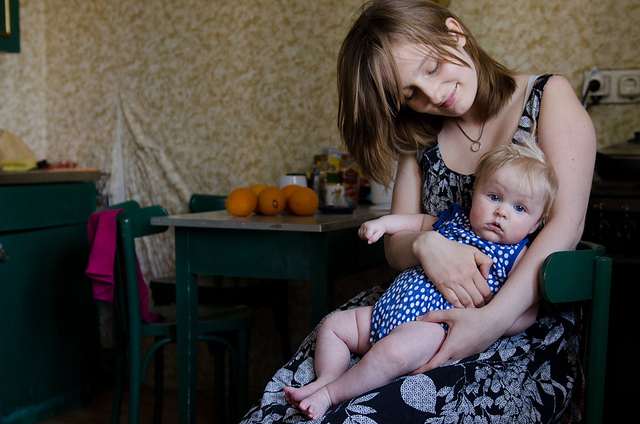
Adapted excerpt from Meathooked: The History and Science of Our 2.5-Million-Year Obsession with Meat by Marta Zaraska. Copyright © 2015. Available from Basic Books, an imprint of Perseus Books, a division of PBG Publishing, LLC, a subsidiary of Hachette Book Group, Inc.
The lesson of what foods are good to eat begins in the mother’s womb. The flavors from a pregnant woman’s meals seep into her amniotic fluid, which the fetus swallows and tastes. Studies show, for instance, that if she eats a lot of carrots, her baby, once born, will enjoy carrot-flavored cereal more than kids whose moms didn’t go carrot crazy during pregnancy.
Later, this culinary education continues on the breast. The process is similar: what the mother eats flavors her milk, and that’s what, in general, her child learns to prefer. If you don’t care for aniseed much, for example, it’s quite likely your mom didn’t eat it in your earliest days.
Then comes weaning time. Human babies, along with other baby omnivores, like rat pups, acquire tastes for the same foods the adults in their lives enjoy most. As scientists put it, their food preferences are “socially transmitted.” Since baby rats are not spoon-fed in high chairs, they learn what’s good to eat by sniffing the mouths or feces of their older companions, where the scent of food may still linger. As a result, rats develop ethnic-like “cuisines,” since two groups living in similar environments may have learned generation after generation to choose some foods over others. If a rat traveled from his home (say New York’s Grand Central subway station) to another rat enclave (Times Square station, perhaps), he likely would be quite surprised by what the others lived on. But rats and humans are not the only animals whose culinary likes and dislikes vary with culture: it’s the same with baboons, sparrows, lizards, and even fish.
The foods that an animal learns to like from its parents can be quite bizarre, too. In experiments, kittens who saw their mothers munch on bananas acquired a taste for this rather unkitty food. If a child observes people around him eating hamburgers, fries, and ketchup, he will likely grow up to enjoy these particular foods, too (and he is probably American). If she grows up among lovers of mopane caterpillars, millet mush, and hippo meat, that is what she’ll prefer as an adult (and she is probably Zambian).
When it comes to liking a food, whether fried bacon or durian, even the facial expressions of the people around us are important. Studies show that if someone makes a disgusted face when a child is eating, the young one may lose his appetite. Meanwhile, a happy smile can open tightly sealed toddler lips to things that were previously considered inedible. Of course, parents often subconsciously react to foods they serve their kids. If you hate brussels sprouts, it’s hard not to wince while offering them to a child. If you love bacon, you may lick your lips with pleasure when the tiny fork cruises to your kid’s mouth. Children as well as adults, being the social creatures that we are, learn what’s yummy in social settings. We simply observe what others like and dislike and follow their lead. In Mexico, kids discover from a young age that the pain associated with chili peppers is considered a good thing, and so they start to enjoy it.
Social sharing during feasts is one of the most important reasons why meat keeps such a tight grip on us. This impulse likely dates back to when our hominin ancestors were divvying up their kills. Meat was the perfect food to share for a celebration: it came in a big package, too big for a single person or even a family to down in one go, and it spoiled if not eaten fast. It was hard to get—and still is—either because it’s difficult to hunt on a savanna or it’s difficult to hunt down enough money in your wallet to buy it. For this reason, meat is the food for feasting, so much so that in many cultures people call celebrations a “time to eat meat.” Even the word carnival comes from the Italian carnevale, meaning “good-bye meat” (as in, good-bye, see you after the fasting of Lent).
Sharing food, and meat in particular, makes people feel they belong, whether it’s grilling beef burgers with neighbors (North America), roasting pork kiełbasa over a campfire with friends (Poland), or drinking a bowl of boshintang, dog soup, with family during the hottest days of summer (South Korea). Meat becomes even more valued because it gets connected to pleasure, to feelings of togetherness.
No wonder then that when a vegetarian says “No thank you” to a cut of steak, dark clouds of social disapproval quickly gather. His hosts begin to think, “What do you mean, no thank you? No thank you for sharing food with us? You don’t want to be a part of our group?”
Author: Marta Zaraska
Image: Alena Getman/Flickr; Benjamin Faust/Unsplash
Editor: Emily Bartran






Read 0 comments and reply